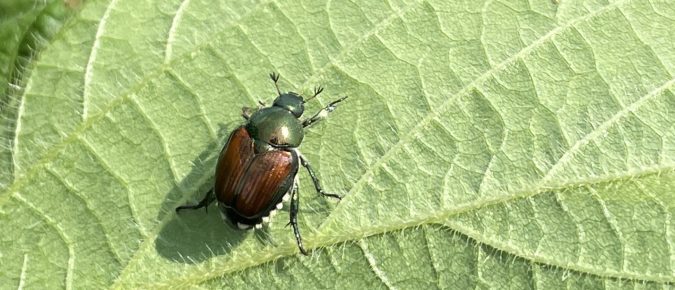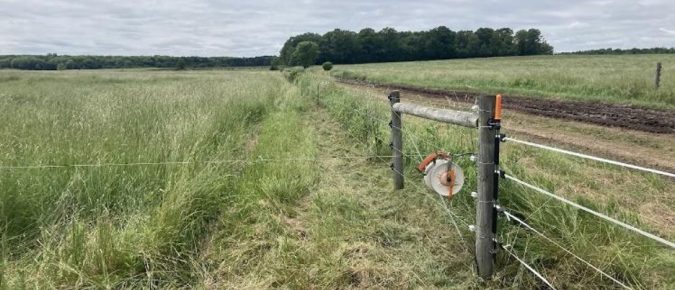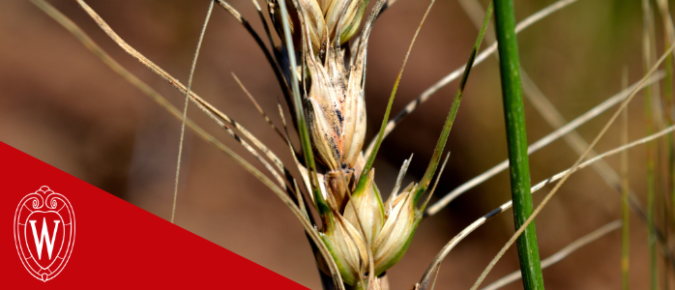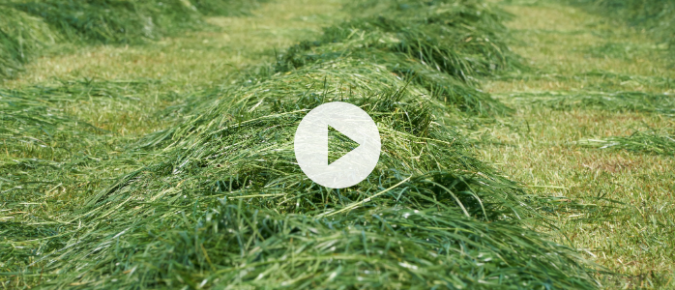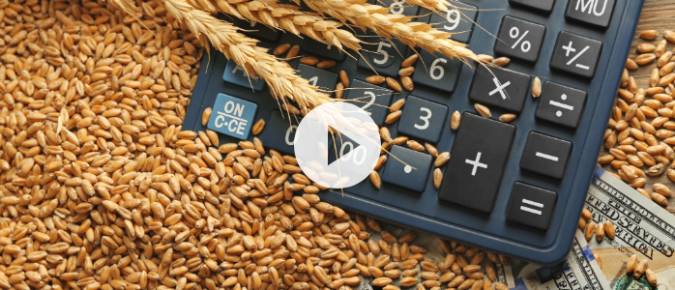Japanese beetles (Popillia japonica) are an invasive beetle from Japan that feed on the leaves and flowers of crops. They mainly feed on corn and soybeans, but can also be a pest to ornamental plants, fruits, and turf.
Harvesting small grains or processing crops in the summer months provides a great opportunity to plant a variety of cover crop species that can achieve several different benefits or goals such as soil erosion protection, nitrogen (N) supply to subsequent grain crops, and weed suppression.
A great deal of the success in a well-managed grazing system is owed to the design of the fencing infrastructure. Especially in managed grazing systems where livestock are rotated frequently, a well-designed fencing system that accommodates rotational grazing can make or break the system.
Did you just harvest your wheat? Are you looking to maximize the benefits of manure applied to your wheat fields? What about capturing the additional growing degree days and planting a cover crop after your wheat is harvested? Check out our latest Bumper Crop video on essential tips for manure applications and cover crops after wheat harvest!
July is National Corn Month! Watch this new Bumper Crop video highlighting and appreciating one of America’s most versatile and essential crops and current research exploring the future of corn production.
DON (deoxynivalenol or vomitoxin) is a mycotoxin produced by the fungus responsible for Fusarium Head Blight (FHB), a common and economically important disease in small grains. DON is a problem because it is toxic to humans and animals. Grain grown on-farm and fed to livestock should be managed properly to avoid negative effects.
The July 10 Badger Crop Connect webinar featured Jose Franco, a research agronomist with the U.S. Dairy Forage Research Center (USDA). Jose summarized current research efforts at the U.S. Dairy Forage Research Center on cover crops and continuous living cover. Ongoing research includes cover crop breeding efforts, work on alternatives to winter cereal rye following corn silage and some of the benefits of including flowering cover crops, and a whole systems approach to dairy forage systems evaluations.
The July 10 Badger Crop Connect webinar featured Dane Elmquist, a conservation cropping outreach specialist in the UW–Madison Division of Extension Agriculture Institute. Dane gave an overview of the Wisconsin Cover Crop Citizen Science network and highlighted project results. He also showcased the project’s interactive data dashboard and provided information on how to participate in the project for the 2024-2025 season.
The July 10 Badger Crop Connect webinar featured Steve Vavrus, the Wisconsin State Climatologist, giving a brief update about weather and climate conditions in Wisconsin July 10, 2024 and onward. Vavrus talks about the climatic impacts of the heavy rainfall Wisconsin has experienced lately, talks about relevant agronomic considerations, and gives outlooks for future precipitation and temperatures.
The June 26 Badger Crop Connect webinar featured Dr. Brenda Boetel, Professor and Department Chair of Agricultural Economics, and Extension Agricultural Marketing Specialist at UW–River Falls. The grain markets are off of their February 2024 lows; however, prices still remain lower than what farmers have experienced the previous few years.
Dr. Mitchell opens with a quick update on prevented planning options with crop insurance and where we are with crop progress and crop conditions based on USDA NASS data. He then examines various indicators about the current state of farm finances in this year of projected tight margins for corn and soybeans, such as land values, loan repayment rates, interest rates and inflation. Discussion focuses on financial steps farmers can take now as they prepare for fall. Dr. Mitchell closes with some updates on where Congress is with the Farm Bill and some of the changes being proposed for commodity support and crop insurance.
The June 26 Badger Crop Connect webinar featured Bridgette Mason, the Wisconsin Assistant State Climatologist. Bridgette walks through the effects of recent heavy precipitation, looks at the drought (or lack thereof) status across Wisconsin, and wraps up with an overview of weather patterns to come in late June and early July 2024.

